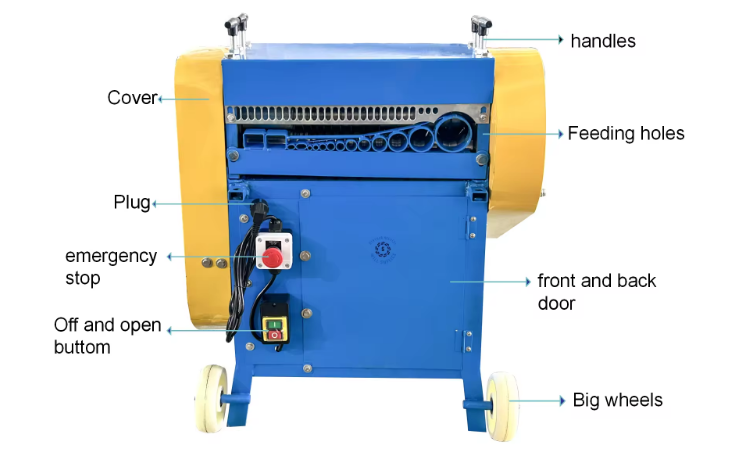
10 月 . 07, 2024 19:34 Back to list
Understanding Industrial Shredding Equipment Key Components and Applications
Industrial shredding equipment plays a crucial role in various industries by processing materials into smaller, manageable pieces. This equipment is designed for heavy-duty operations and is essential for recycling, waste management, and materials recovery. Understanding the functionality, components, and applications of industrial shredders can help businesses make informed decisions in their operational processes.
At its core, an industrial shredder is engineered to handle large volumes of materials, ranging from scrap metal to plastics and electronic waste. Shredding not only reduces the size of these materials but also enables their efficient recycling. The design of industrial shredders varies significantly depending on the type of materials they are intended to process. There are primary types of shredders, including single-shaft, double-shaft, and granulators.
Single-Shaft Shredders These are versatile machines suitable for a wide range of materials, including plastics, wood, and paper. The single rotating blade cuts the material against a stationary bed knife, producing uniform particle sizes. This type of shredder is ideal for manufacturers looking to achieve specific sizes for their recycled materials.
Double-Shaft Shredders This design features two parallel shafts with intermeshing blades, which allows for a more aggressive shredding process. Double-shaft shredders are particularly useful for tougher materials, such as tires and metals. They can handle bulkier items and are highly effective for size reduction.

Granulators Often used in conjunction with other shredding equipment, granulators are designed for finer size reduction. They are primarily employed in recycling plants and manufacturing facilities to create plastic pellets from shredded materials, facilitating easier reuse in production processes.
When selecting industrial shredding equipment, several factors should be considered. The type of material to be processed, the desired output size, and the volume of material are critical in determining the most suitable shredder configuration. Additionally, energy efficiency, durability, and maintenance requirements play pivotal roles in the long-term performance and cost-effectiveness of the equipment.
The applications of industrial shredding equipment span various industries. In the recycling sector, shredders minimize the volume of waste materials, making them easier to transport and process. In manufacturing, they help in reclaiming scrap materials, allowing companies to reduce raw material costs. Moreover, shredding plays a vital role in waste-to-energy conversion, where organic waste is processed into biomass for energy generation.
In the context of environmental sustainability, industrial shredding equipment aids in reducing landfill contributions by facilitating the recycling process. Businesses across sectors are increasingly emphasizing waste reduction and responsible disposal practices. The implementation of effective shredding systems not only enhances productivity but also aligns operations with eco-friendly initiatives.
In conclusion, industrial shredding equipment is a critical component in modern manufacturing and waste management practices. With a variety of configurations tailored to specific material types and processing needs, these machines are vital for recycling and sustainable resource management. As industries continue to evolve, advancements in shredding technology will undoubtedly enhance efficiency and environmental stewardship, making them indispensable tools in our contemporary landscape.
Latest news
Unveiling the Power of Eddy Current Separator
NewsSep.25,2024
Transform Your Home Recyclin:home metal shredder
NewsSep.25,2024
The Future of Waste Management with Recycling Line Picker
NewsSep.25,2024
The Benefits of a Metal Recycling Plant
NewsSep.25,2024
Revolutionize Material Separation with Onwang Technology
NewsSep.25,2024
Innovative Waste Management: Unveiling the MSW Sorting Plant
NewsSep.25,2024